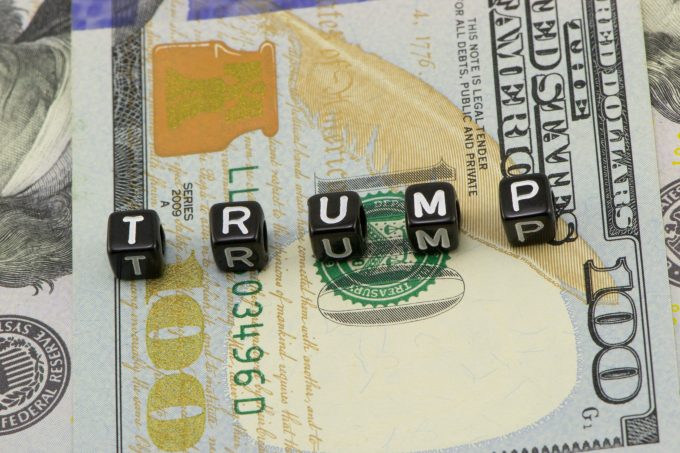The US Line: Making America move again
Mamma mia! A new dawn for trucking under Trump?
UPS: MULTI-MILLION PENALTY FOR UNFAIR EARNINGS DISCLOSUREWTC: PUNISHEDVW: UNDER PRESSUREKNIN: APAC LEADERSHIP WATCHZIM: TAKING PROFITPEP: MINOR HOLDINGS CONSOLIDATIONDHL: GREEN DEALBA: WIND OF CHANGEMAERSK: BULLISH CALLXPO: HEDGE FUNDS ENGINEF: CHOPPING BOARDWTC: NEW RECORDZIM: BALANCE SHEET IN CHECKZIM: SURGING
UPS: MULTI-MILLION PENALTY FOR UNFAIR EARNINGS DISCLOSUREWTC: PUNISHEDVW: UNDER PRESSUREKNIN: APAC LEADERSHIP WATCHZIM: TAKING PROFITPEP: MINOR HOLDINGS CONSOLIDATIONDHL: GREEN DEALBA: WIND OF CHANGEMAERSK: BULLISH CALLXPO: HEDGE FUNDS ENGINEF: CHOPPING BOARDWTC: NEW RECORDZIM: BALANCE SHEET IN CHECKZIM: SURGING

Donald Trump has indicated that he would implement new tariffs if returned to the White House.
While this is not likely to achieve desired domestic effects, it would also be a drag on trade. Cargo owners are worried.
The annointed presidential candidate of the Republican party appears bent on raising barriers to international cargo flows.
Mr Trump has floated ideas of a general tax cut, to be funded by increased tariffs on imports, indicating a flat tariff of 10% on all imports and duties of up to 60% on imports from China.
Some pundits reckon such moves would stimulate the US economy, but most economists sounded more negative, warning that likely outcomes would be higher inflation, lower economic growth and a higher financial burden on working families, as tariffs ultimately act as a price-increase mechanism for consumers.
By some estimates, Mr Trump’s tariffs from his first spell in the White House raised costs by $1bn a year.
Moreover, the desired effect of stimulating domestic manufacturing seems to be elusive. Matt Priest, president and CEO of Footwear Distributors and Retailers of America, commented that previous tariffs had not bolstered US manufacturing.
“We pay $4bn a year in tariffs and we have 99% import penetration,” he added.
While China is the obvious target of the mooted tariff increases, other trade partners would also suffer. The Economist Intelligence Unit identified Mexico and Canada as the countries with the highest risk exposure after China, due to their share of trade, their favourable trade balances and how much of their exports involve politically sensitive items.
Vietnam and India rank fourth and eighth on the list of countries likely most impacted.
The Peterson Institute for International Economics, a non-partisan think-tank based in Washington, anticipates repercussions beyond individual economies. It warned that such tariffs would risk a global trade war, as such measures usually prompt counter measures.
For some sectors and operators, they would pose a fundamental challenge to their business model. Mr Priest commented that they would “fundamentally alter the approach to trade”.
Gene Seroka, executive director of the port of Los Angeles, suggested it “could change the landscape and future of the port”.
Mr Priest noted that the proposed changes would require a lengthy legislative process. For now, cargo owners are focused on two other strategies – shifting production out of China to South-east Asia and rushing to bring products into the US before the planned tariffs come into play.
Several logistics providers have commented that the surge of maritime imports this year had been partly driven by companies’ desire to bring in goods before a possible change of the guard in Washington.
Other sectors are less fazed at this point. One Houston-based project forwarder executive remarked that the typical timeline for projects of two to three years rendered potential tariffs largely irrelevant for current undertakings.
Other observers have commented that both major US political parties had shown a growing tendency toward protectionism. The current administration has not revoked tariffs raised during Mr Trump’s tenure in the White House, and both candidates champion upgrades to infrastructure projects and freight mobility corridors.
The most recent move of the incumbent administration came on 17 July, an executive order which imposes a 25% tariff on steel products made with steel produced outside the USMC free trade zone, and a 10% tariff on aluminium products where the metal originates in China, Russia, Belarus or Iran.
Comment on this article